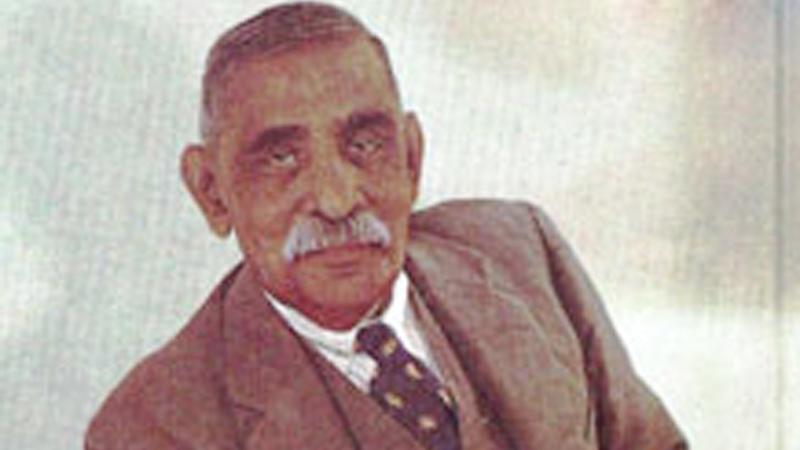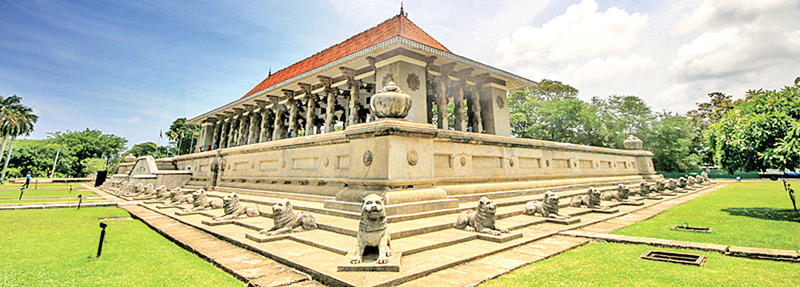

European empires in Asia collapsed after World War II. Struggles for independence started in most Asian countries such as India, Sri Lanka and Burma (Myanmar). The Indian struggle for independence was tainted with violence. There were massacres and migrations on a large scale. Aung San, the youthful leader of the Burmese independence struggle did not live to see the great day when Burma was granted independence on October 17, 1947. This was because he was assassinated on June 19, 1947. India did not plunge into a civil war because of the device of partition.
Ceylon’s situation was quite different. There was peace and order in the country. Therefore, the British decided to offer Independence to Ceylon on a platter. There was no division in the country and Ceylon became an independent nation on February 4, 1948. There was, of course, a political issue as far as the Tamils were concerned. However, Tamils in Ceylon at the time were not a militant group. G.G. Ponnambalam led the Tamils in their political campaigns. Eventually, he was elected to the State Council in 1934, prior to the grant of independence. He represented The Tamil Congress and brought in a few more Tamil politicians into the government.
As a Minister in the D.S. Senanayake government, Ponnambalam held moderate political views. He found it easy to work with his political rivals. While enjoying ministerial perks and prestige, he was in a position to influence policy matters of the government. Ponnambalam publicly acknowledged the genuine interest of the government to help the minorities. He understood the political situation correctly and worked carefully to win generous concessions to Tamils.
At the time, there were constitutional guarantees preventing legislation against minorities. They were embedded in the draft constitution of 1944 which was introduced by Senanayake. However, the Soulbury Constitution of 1946-47 did not provide adequate rights for minorities against discriminatory legislation. The minorities who had confidence in Senanayake later helped him to form the United National Party (UNP). The new political party soon won the confidence of the minorities. Even the majority community accepted the UNP as a credible political party.
It was against this background that S. W. R. D. Bandaranaike formed his Sinhala Maha Sabha (SMS). It was initially backed by Christian minorities. Muslims who supported the Tamils in the past started backing the SMS. With the support of the Tamil Congress, Senanayake established himself as a competent ruler. Plantation workers of Indian origin were not regarded as an organized group and were left out.
Senanayake is remembered today as a politician who prevented all efforts to abandon the concept of a secular state and religious neutrality. Although Buddhists were not pleased with the influence enjoyed by Christians, there was no religious conflict in the country. With the grant of independence, the transfer of political power was smooth.
The last British Governor Sir Henry Monck-Mason-Moore (1948-49) became the first Governor General of Ceylon. Unlike India and Pakistan which opted for republican status, Ceylon recognized the Commonwealth headed by the British monarch.
However, some historians argue that Ceylon did not receive complete independence as it had agreements on defence and external affairs with the British. It is further alleged that our attainment of independence was not robust or dramatic which is true to a certain extent.
In the 1947 general elections, the most formidable challenge to the UNP came from the leftist parties. Eventually, many Trotskyists and Communists found themselves elected to Parliament. They and their fellow travellers held about one-fifth of the membership. There was speculation that leftists would form a government, but that was not to be.
After the grant of independence, the UNP stabilized its position in politics, but the leftists remained divided on personal and ideological grounds. As a result, leftists could not appoint a leader of the Opposition. The Lanka Sama Samaja Party (LSSP) was the largest opposition group, but the Bolshevik Sama Samaja Party was against it. In 1950, however, Dr N.M. Perera became the Leader of the Opposition with no support from the Communist Party (CP).
The situation today is no less different. The UNP is the only undivided political party. The Sri Lanka Freedom Party (SLFP), founded by S.W.R.D. Bandaranaike, stands divided, with some members supporting the UNP and others opposing it. The CP and the LSSP are no longer vibrant parties. The Janatha Vimukthi Peramuna (JVP) takes different stands at different times and people are wondering where it is heading. In a way, the leftists remain divided on various grounds. This is the pathetic scenario in post-independent Sri Lanka.

Independence monument
